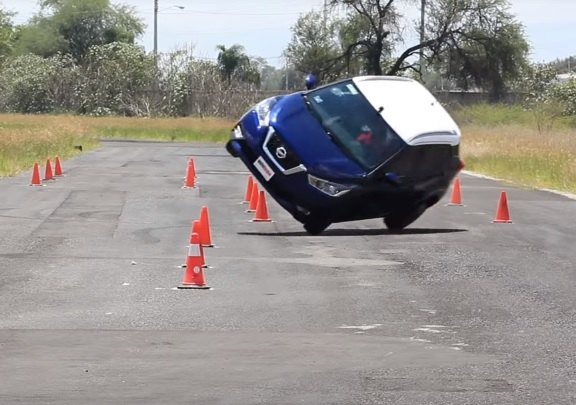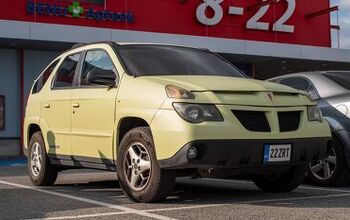Be Thankful the U.S.-Market Nissan Kicks Has Standard Stability Control

A reader sent us a link to a Mexican handling test of Nissan’s new, front-drive Kicks crossover, and one glimpse of the vehicle’s “moose test” will have you on your knees, thanking the deity of your choice for electronic safety nannies.
We all know that high-riding vehicles suffer from an inherent top-heaviness, born of a high center of gravity and compounded by long suspension travel. As SUVs grew in popularity in the ’90s, a slew of alarming videos arose showing popular SUVs flipping or riding on two wheels while swerving sharply to avoid a object, then recovering. The moose test is the ultimate test of a vehicle’s stability, and it’s the test most likely to see a tall vehicle — thanks to rapid weight transfer — roll more than it yaws. Sometimes with disastrous results.
The advent of electronic stability control was a godsend for these types of vehicles, helping overcome much of the roll and yaw, but, while it’s mandated in the U.S., Canada, and Europe, in some markets it’s absent from certain models or trim levels. Take a look at what happens without it.
Mexican auto publication Autologia posted this video as part of a comparison test that pitted the Kicks against two subcompact rivals — the Honda HR-V and Chevrolet Trax. Their long-term Kicks revealed the same positive qualities we discovered during a first drive. It’s comfortable, drives well, and has decent room.
The Kicks, despite being front-drive-only and clearly designed for the urban buyer, also boasts 7 inches of ground clearance. Thanks to a low curb weight, fuel efficiency from its 125 hp, 115 lb-ft 1.6-liter is top-notch. And how about that price…
Notwithstanding all these qualities, the Kicks showed a tendency to heel over in Autologia‘s slalom test. As Mexico doesn’t insist on stability control, their tester didn’t have it. While performing the moose test at 65 km/h (40 mph), the Kicks’ vertical axis desperately wanted to get horizontal, nearly rolling the vehicle as the driver struggled to get it back on four wheels. We hope the publication’s budget covered the cost of that pair of pants.
A later, identical test performed in an uplevel Kicks with stability control was far less terrifying, though the vehicle did lift the inside rear wheel during the maneuver. In that test, the system countered enough of the roll effect to allow the rear end to slide out a bit. Better to get tail-happy than end up on your roof.
Autologia noted that the driver didn’t feel safe performing the moose test at a higher speed in the stability control-equipped Kicks.
When contacted about the test, Nissan Mexico said stability control, which is standard equipment on the top-trim model and optional in the others, would soon be found on all Kicks sold in that market. U.S.-market Kicks, of course, carry Nissan’s Vehicle Dynamic Control and traction control as standard equipment.
[Images: Nissan, Autologia/ YouTube]

More by Steph Willems
Latest Car Reviews
Read moreLatest Product Reviews
Read moreRecent Comments
- Cprescott Doesn't any better in red than it did in white. Looks like an even uglier Honduh Civic 2 door with a hideous front end (and that is saying something about a Honduh).
- Kwik_Shift_Pro4X Nice look, but too short.
- EBFlex Considering Ford assured us the fake lightning was profitable at under $40k, I’d imagine these new EVs will start at $20k.
- Fahrvergnugen cannot remember the last time i cared about a new bmw.
- Analoggrotto More useless articles.



































Comments
Join the conversation
This guy was very lucky... Very lucky.
Tall things tip over, even Ikea knows this. Wonder why all those soccer moms that keep buying these "safe" SUV/CUVs think.